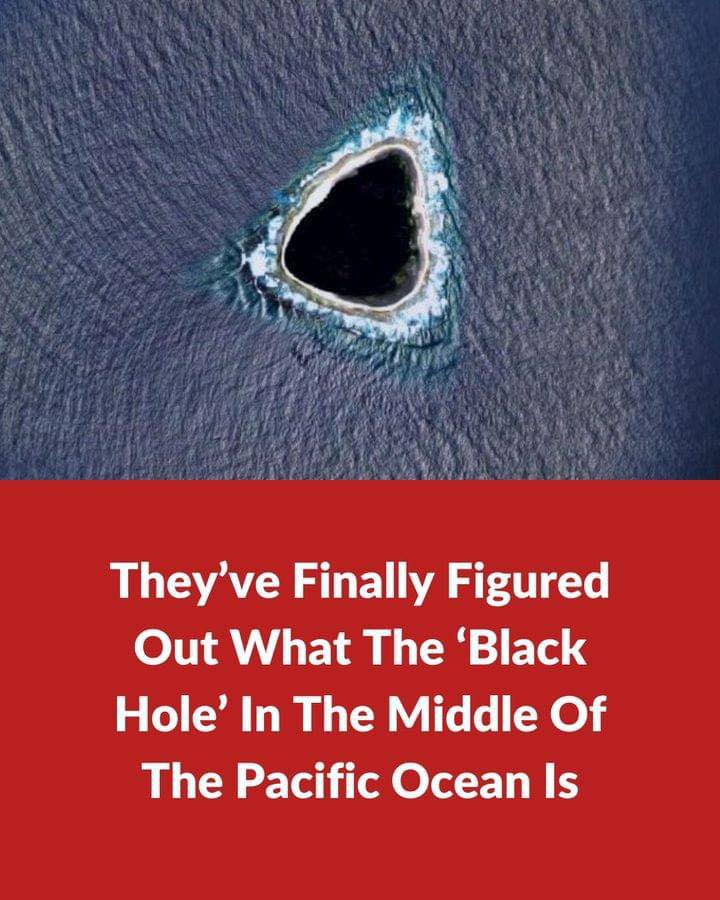Some mysteries are meant to remain unsolved, while others capture our curiosity and beckon us to investigate further. With the advent of modern technology, mysteries that might have stayed hidden in the past are now exposed to global audiences. Among these, the internet and tools like Google Maps have brought countless enigmas to light, offering a new lens through which we see the world.
Google Maps, in particular, has revolutionized the way we navigate and explore our planet. However, this powerful tool has also sparked intrigue and speculation, often uncovering what appear to be anomalies that challenge conventional explanations. One such mystery emerged recently, captivating internet users and fueling a wave of conspiracy theories. A dark, shadowy mass was spotted in the Pacific Ocean, positioned just above a small, remote island. The sighting quickly gained attention, drawing both curiosity and skepticism.

The mysterious image first surfaced on a popular Reddit thread dedicated to uncovering unusual discoveries on Google Maps. This particular case centered on Vostok Island, a tiny and relatively obscure landmass in the Pacific. At first glance, the image seemed to depict an island, but something about it appeared off. A dark shadow, almost black in color, seemed to obscure the land below, leaving an eerie void in the middle of the sea. To some, it resembled a censored area—a deliberate attempt to conceal something from public view. The island’s appearance sparked lively discussions among Reddit users and beyond, with theories ranging from the plausible to the outlandish.
Many conspiracy theorists latched onto the idea that the island had been deliberately censored by Google. They speculated that its location might hold some hidden significance or that it could be home to classified operations or unexplained phenomena. In contrast, others argued that there was nothing extraordinary about the island and that its unusual appearance was simply a matter of perspective. Those who had visited Vostok Island in person claimed it was just an ordinary patch of land, albeit with a unique visual feature.
A common explanation offered by visitors and experts alike pointed to the dense vegetation covering the island. Vostok Island is known for its thick forest of Pisonia trees, a species that grows in tightly packed clusters. These trees, with their dark, lush foliage, create a canopy so dense that it can appear nearly black from an aerial view. The combination of the trees’ natural coloration and the lighting conditions during the satellite imaging process likely contributed to the island’s mysterious appearance on Google Maps. What looked like a deliberate blackout might simply be nature at work.
Despite these rational explanations, the intrigue surrounding the island persisted. Some adventurous individuals, driven by curiosity, decided to visit Vostok Island to see it for themselves. They captured videos and photographs, documenting the island’s unspoiled beauty and challenging the notion that it was anything other than a natural wonder. The footage revealed pristine beaches, vibrant greenery, and a tranquil atmosphere that stood in stark contrast to the ominous image presented on Google Maps.
The case of Vostok Island serves as a reminder of how our perception of reality can be influenced by technology. Satellite images, while powerful tools, are not infallible. Factors such as lighting, resolution, and the angle of capture can all affect how an area is represented. In some cases, these limitations can lead to the appearance of anomalies, sparking speculation and, in some instances, conspiracy theories.
This phenomenon isn’t unique to Vostok Island. Over the years, Google Maps users have uncovered numerous mysterious images that have puzzled and fascinated viewers worldwide. From pixelated zones to blurred-out areas, these discoveries often ignite debates about why certain locations are obscured. While some of these anomalies have straightforward explanations, others remain shrouded in mystery, fueling endless speculation.
The allure of such mysteries lies in our innate curiosity as humans. We are drawn to the unknown, eager to uncover secrets and solve puzzles. In the digital age, this curiosity is amplified by the tools at our disposal. Platforms like Google Maps allow us to explore far-flung corners of the globe from the comfort of our homes, giving us a sense of adventure and discovery that was once reserved for explorers and adventurers.
However, the case of Vostok Island also highlights the importance of critical thinking. It’s easy to jump to conclusions when confronted with an image that seems unusual or unexplained. But as this story demonstrates, there is often a logical explanation waiting to be uncovered. By seeking out credible information and examining multiple perspectives, we can separate fact from fiction and appreciate the world’s natural wonders without falling prey to unfounded speculation.
At its core, the mystery of Vostok Island underscores the beauty and complexity of our planet. Whether viewed from the ground or from space, the Earth is full of surprises, each with its own story to tell. The dense forests of Pisonia trees, the shimmering waters of the Pacific, and the remote charm of a tiny island all remind us of the incredible diversity and wonder that exist in the natural world. And while technology has made it easier than ever to uncover these marvels, it has also shown us that not everything is as it seems.
For those who have seen Vostok Island firsthand, the experience is a testament to the power of exploration and discovery. The island may have appeared mysterious and even foreboding on Google Maps, but in reality, it is a serene and untouched paradise, a place where nature reigns supreme. The black shadow that once captivated internet users is, in fact, a dense, green forest teeming with life—a perfect example of how our perceptions can be shaped by context and perspective.
Ultimately, the story of Vostok Island invites us to embrace curiosity while maintaining a healthy dose of skepticism. Mysteries may capture our imagination, but they also encourage us to look deeper, ask questions, and seek out the truth. Whether exploring the far reaches of the Pacific or simply observing the world around us, there is always more to discover—and sometimes, the answers are even more fascinating than the mysteries themselves.





